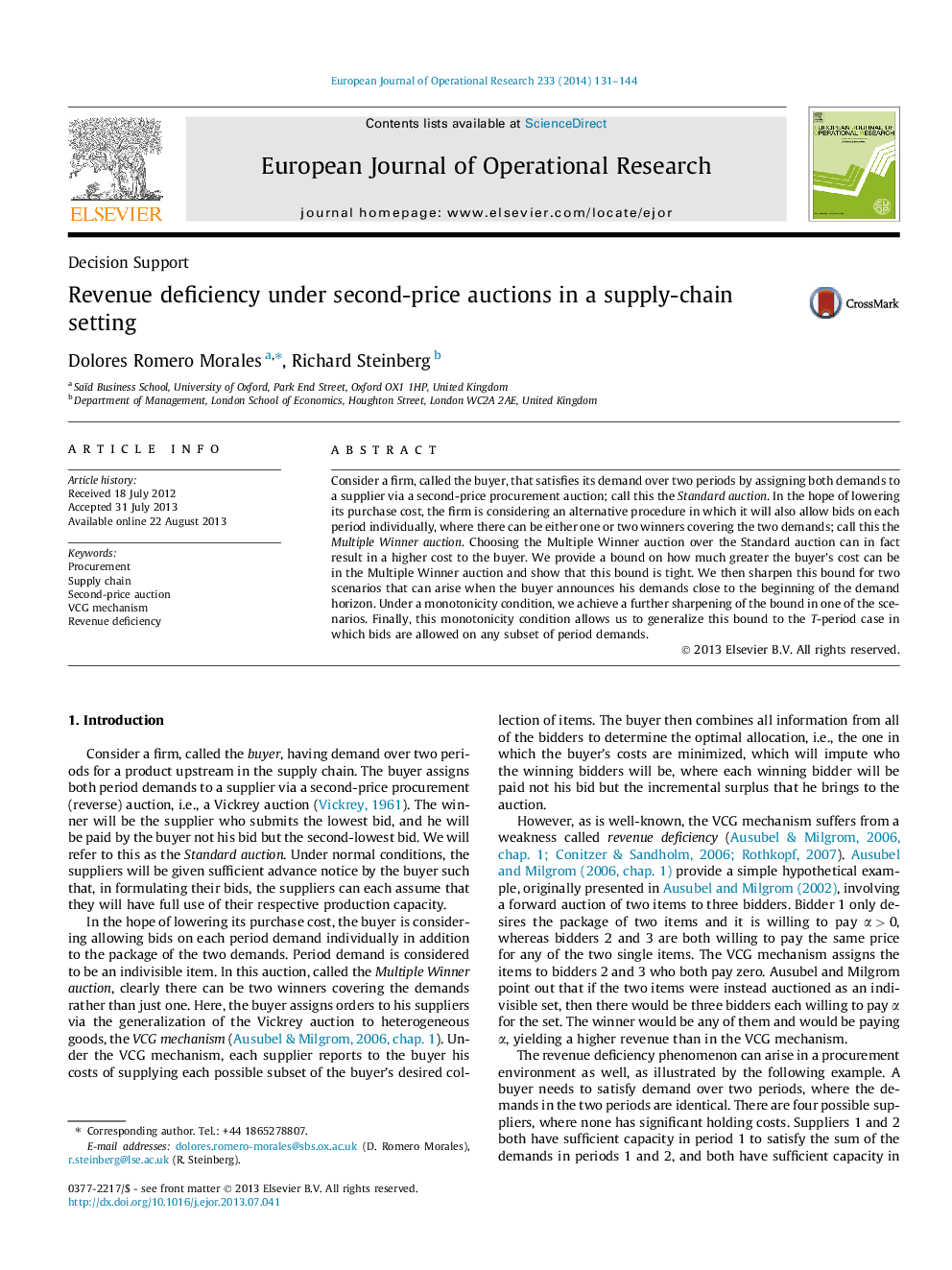| Article ID | Journal | Published Year | Pages | File Type |
|---|---|---|---|---|
| 479846 | European Journal of Operational Research | 2014 | 14 Pages |
•We model two multiperiod procurement auctions accounting for all supply chain costs.•We investigate the revenue deficiency phenomenon in this procurement environment.•We provide a bound on the revenue deficiency and show when this bound is tight.•We analyze what factors drive revenue deficiency.
Consider a firm, called the buyer, that satisfies its demand over two periods by assigning both demands to a supplier via a second-price procurement auction; call this the Standard auction. In the hope of lowering its purchase cost, the firm is considering an alternative procedure in which it will also allow bids on each period individually, where there can be either one or two winners covering the two demands; call this the Multiple Winner auction. Choosing the Multiple Winner auction over the Standard auction can in fact result in a higher cost to the buyer. We provide a bound on how much greater the buyer’s cost can be in the Multiple Winner auction and show that this bound is tight. We then sharpen this bound for two scenarios that can arise when the buyer announces his demands close to the beginning of the demand horizon. Under a monotonicity condition, we achieve a further sharpening of the bound in one of the scenarios. Finally, this monotonicity condition allows us to generalize this bound to the T-period case in which bids are allowed on any subset of period demands.
